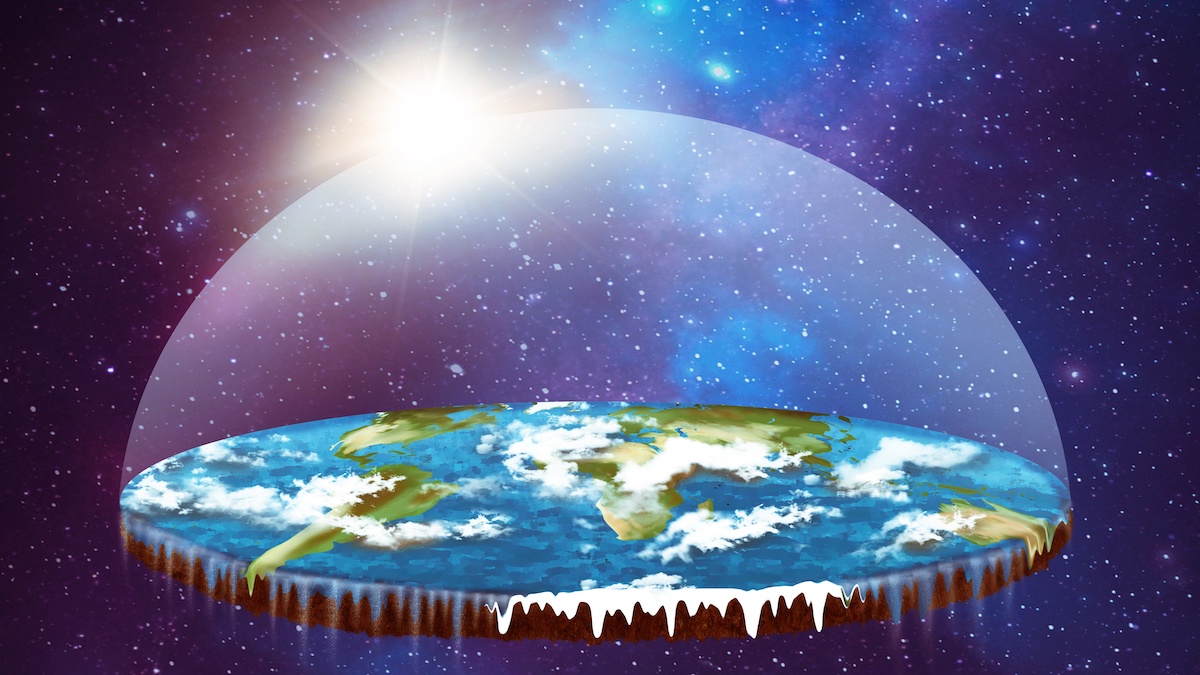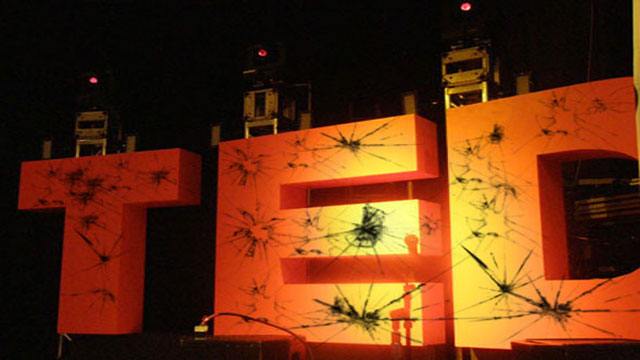4 categories of pseudoscience — and how to talk to people who believe in them

- Trying to define pseudoscience is difficult. There is no one thing that makes something “pseudo.”
- Historian of science Dr. Michael Gordin suggests that “pseudoscience is science’s shadow.”
- People invested in pseudoscience often think they are doing real science, and approaching them with that understanding can make speaking to them much easier.
Despite increasing levels of technology and scientific literacy, it seems as if pseudoscience is more insane and pervasive than ever. But if these ideas are so clearly mistaken, why is it that so many people get sucked into them? Why do some pseudosciences, like flat Earth theory, even have conventions where people do what they think is science?
In an essay on pseudoscience, historian of science Dr. Michael Gordin argues that we often think about the divide between real science and pseudoscience incorrectly. By looking at pseudosciences in how they relate to real science, we can get a better understanding of what they are and how to deal with them.
What defines science, anyway?
The question of what defines a claim as scientific is known to philosophy as the demarcation problem. While many great minds have attempted to draw a clear line between the scientific and the unscientific, the results of their efforts have been mixed.
The most commonly cited demarcation line is Karl Popper’s idea of falsifiability. According to Popper, for a hypothesis to be scientific, it must be falsifiable. An idea like Einstein’s theory of relativity makes clear predictions that can be tested, such as whether the sun bends light passing near it. This makes it scientific. On the other hand, Popper suggested that some theories, like the Marxist theory of history or Freudian psychoanalysis, were unfalsifiable, and therefore unscientific.
While this line is the most commonly used, it has problems. An idea might be falsifiable, but sometimes it is difficult to tell which idea an experiment falsifies. At the same time, the idea that Bigfoot exists is technically falsifiable, but few would consider searching for Sasquatch to be a worthwhile scientific endeavor.
Another concept, previously quite popular and still referenced in some circles, is that of the paradigm shift, as described by Thomas Kuhn. Kuhn puts the line between science and non-science in terms of paradigms — bundles of ideas that are widely accepted among scientists.
Ideas that align with paradigms can be considered science, while those that do not are considered something else. Revolutions in science occur when problems with the dominant paradigm became too large to ignore, and a new one comes to prominence. He also noted that people in certain pseudosciences, like astrology or medieval medicine, weren’t actually doing research and therefore weren’t practicing science at all.
The idea of paradigms as the demarcation lines can explain some aspects of science, but it doesn’t entirely explain how shifts to new ideas occur. Importantly, while it can identify what pseudoscience is, it tends to the relativistic; what is inside or outside the paradigm can be determined by irrelevant factors.
Dr. Gordin suggests that the problem with these ideas and others like them is their reliance on one demarcation line. As he puts it:
“Any attempt to build a taxonomy of the many doctrines that have been labeled as ‘pseudoscientific’ reveals the impossibility of an internally consistent single definition of fringe science.”
Instead, he suggests that “pseudoscience is science’s shadow. Specifically, it is the shadow of professional science, and just as a shadow cannot exist without the object casting it, so does every object necessarily cast shadows.”
These shadows, and there is more than one, can be treated as overlapping, but with certain tendencies that allow us to categorize them.
The multiple shadows of science
Dr. Gordin warns these groups are not all-inclusive, but they do cover many pseudoscientific topics. Each is motivated by different factors, has different sorts of ideas inside of it, and has to be dealt with in different ways.
First, he identifies the vestigial sciences. He describes these as:
“…systems of thought that used to be considered sciences but that professional scientists have, over time, either gradually moved away from or actively excluded. The most well‐known are astrology and alchemy, which during the Renaissance were largely synonymous with what would become by the end of the Enlightenment’ astronomy’ and ‘chemistry’.”
Many of these were once considered true sciences and some even continue to have large numbers of supporters carrying out work that looks a fair bit like real science.
Next, he identifies the ideological fringes. These are the ideas that are “distortions of rational thinking in the service of a political ideology.” Famous examples include Nazi Deutsche Physik, Stalinist Michurinism, and the increasingly tortured arguments against climate science we see today.
After that is the mentalist fringe. Defined as focusing on “allegedly unrecognized or under-appreciated powers of mind,” this group includes a wide range of pseudoscience, from ESP to spiritualism. Importantly, this group overlaps with the vestigial group, as many ideas here were once considered scientific before better ideas came along.
Lastly, Dr. Gordin defines the controversy fringe. Categorized by “cases in which potentially path‐breaking work is published within the bounds of a science and is greeted with intense skepticism and debate, typically aired across the pages of professional journals,” items in this group can either become accepted, as was the case for quantum mechanics a century ago, or rejected and sent back to the fringe, as is the case for anybody who claims cold fusion has been invented yet.
So, according to this conception, something like astrology fits neatly into one category, while something like dialectic materialism — the Marxist theory of history — could fit within two: vestigial and ideological. Something like the search for Atlantis, the existence of which is a falsifiable hypothesis, would likely rest in the controversy group.
How do we deal with pseudoscience if we can’t easily pinpoint what it is?
One of the biggest takeaways of this is that pseudoscience isn’t one thing; it will change over time. As such we will never be rid of it; anything with a center has a fringe, and science is no different.
Dr. Gordin suggests that, in certain ways, each category is critiquing mainstream science. Addressing those critiques can go a long way in keeping the lid on ideas that would otherwise spread far and wide.
For example, looking at a few of the points that pseudosciences seem to consistently raise, including that real science tends toward “abstruse jargon, excessive mathematization, and an impression that science is cliquish and resists engagement with outsiders,” and taking a moment to address them may help some people on the fringes find their way back to the center.
Dr. Gordin points out that many people know about the work of science, but not how it is done.
“Demystifying those aspects of science that are stamps of its being professional, rather than reiterating oversimplified versions of revisable knowledge claims, would at the very least educate neutral parties more about the daily practices of science, and provide a point of collaboration between the sciences and those social scientists—anthropologists, historians, and sociologists—who have made great strides in elucidating precisely these features of scientists’ work.”
Few people think they are conducting or subscribing to pseudoscience, Dr. Gordin argues.
“… it is a significant point for reflection that all individuals who have been called “pseudoscientists” have considered themselves to be “scientists”, with no prefix.”
Many fields that seem rather absurd have journals with a form of peer review. It is possible to get certification in alternative medicines that don’t do much at all. An entire subculture once existed around the idea that all ancient religions were based on an improbable planetary event between Venus, Earth, and Jupiter.
These claims make much more sense when you consider that the people on the fringes of science think they are doing the same thing as those in the center. Addressing the issues that pushed people away form the center is a reasonable approach if this is correct: You catch more flies with honey than vinegar.
Dr. Gordin specifically rejects “belittling” advocates of pseudosciences, which he accuses Richard Feynman of having done, in favor of finding ways that the mainstream might better address the issues that drove people to the fringes in the first place.
For example, compare the sentiments behind “I have a degree, so trust me” and “this topic is very complex, so understanding takes at least four years of training.” When dealing with somebody who has concerns about credentialism as a barrier to science, this latter approach will likely be more effective in helping advocates of pseudoscience to treat mainstream science as trustworthy rather than just a meritless hierarchy.
Pseudoscience has been around since the rise of modern science and is likely to endure in some form. While there is no metaphysical notion of “pseudoscienceness” that we can point to and weed out of society, Dr. Gordin suggests that we can come to understand what areas nonsense tends to collect in, what draws people to it, and how to talk to them once they develop a taste for it.





